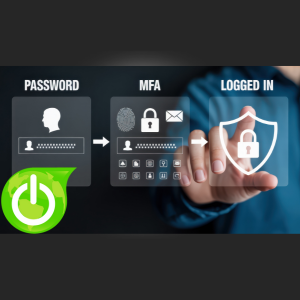 Cyber threats are more sophisticated than ever. Whether you’re an individual or a business, weak passwords and outdated login methods can leave you vulnerable to financial loss, identity theft, and data breaches. While a strong password is your first line of defense, it’s just one piece of the cybersecurity puzzle.
Cyber threats are more sophisticated than ever. Whether you’re an individual or a business, weak passwords and outdated login methods can leave you vulnerable to financial loss, identity theft, and data breaches. While a strong password is your first line of defense, it’s just one piece of the cybersecurity puzzle.
This guide walks you through the essentials of password hygiene, multi-factor authentication (MFA), and emerging verification technologies. We’ll also highlight common mistakes to avoid and share actionable tips to keep your digital identity secure.
Why Strong Passwords Still Matter
Your passwords are like the key to your home and vehicle; if they are stolen by someone else, your personal and business information can be compromised as well as any assets connected to them. Hackers use brute-force attacks, phishing schemes, and credential stuffing to break in, especially when passwords are weak or reused across accounts. Common choices like “123456” or “password” are the first ones attackers try.
To stay safe:
- Use long passwords – at least 15 characters.
- Make them unique for each account.
- Include a mix of uppercase and lowercase letters, numbers, and special characters.
- Avoid personal info like birthdays or pet names.
Password managers simplify this process by generating and securely storing complex passwords. They also reduce the risk of reusing credentials—a major vulnerability in today’s threat landscape.
Why You Should Use a Password Manager
Managing dozens of unique, complex passwords can be overwhelming, but it is critical to do so. A password manager is a secure tool that helps you generate, store, and autofill strong passwords across all your accounts.
Benefits of Password Managers
Password managers offer several benefits including:
- Generate Strong Passwords: Automatically create passwords that meet complexity and length requirements.
- Secure Storage: Passwords are encrypted and stored in a digital vault, accessible only with a master password or biometric login.
- Autofill Convenience: Save time and reduce login errors by autofilling credentials on trusted sites.
- Avoid Reuse: Prevent the risky habit of recycling passwords across multiple accounts.
- Monitor Breaches: Many password managers alert you if your credentials appear in known data leaks.
Choosing the Right Tool
Popular options include 1Password, Bitwarden, Dashlane, and LastPass. Look for features like:
- End-to-end encryption
- Multi-device sync
- Two-factor authentication support
- Breach monitoring
Whether you’re an individual or managing a team, password managers simplify security without sacrificing convenience. They’re especially useful for businesses enforcing password policies and reducing human error.
Multi-Factor Authentication: Your Backup Defender
MFA adds an extra layer of protection by requiring two or more forms of verification. Even if your password is compromised, MFA can block unauthorized access.
Types of Authentication Factors:
- Something You Know: Passwords or PINs.
- Something You Have: Smartphone, hardware token, or security key.
- Something You Are: Biometrics like fingerprints or facial recognition.
Popular MFA Methods:
- Authenticator Apps (e.g., Google Authenticator): More secure than SMS.
- Hardware Tokens (e.g., YubiKey): Resistant to phishing.
- Biometric Verification: Convenient but should be paired with other methods.
According to Microsoft, MFA can prevent 99.9% of account compromise attempts.
What’s Next in Authentication?
The future is moving beyond passwords. Passwordless authentication, using biometrics or cryptographic keys, is gaining traction. Standards like FIDO2 are being adopted by tech giants to phase out passwords entirely.
Behavioral biometrics, which analyze typing patterns or mouse movements, add another layer of security. These innovations reduce friction while enhancing protection, but user education remains key. Most breaches still stem from human error, like falling for phishing scams.
Best Practices for Staying Secure
Security isn’t just about tools, it’s about habits. Here’s how to stay ahead:
- Monitor for Breaches: Use services like Have I Been Pwned.
- Avoid Phishing: Don’t click suspicious links or enter credentials on unknown sites.
- Use a Password Manager: Encrypts and organizes your login details.
- Update Passwords Regularly: Especially for sensitive accounts.
Businesses should enforce password policies and offer cybersecurity training. Individuals should treat passwords like house keys—never share them or leave them exposed.
Common Mistakes to Avoid
Even well-meaning users fall into traps:
- Using Guessable Passwords: “Password123” won’t cut it.
- Reusing Passwords: One breach can compromise multiple accounts.
- Skipping MFA: Convenience isn’t worth the risk.
- Storing Passwords Insecurely: Sticky notes and unencrypted files are a hacker’s dream.
- Never Updating Passwords: Change them every 3–6 months or after a breach.
Ready to Level Up Your Cybersecurity?
Cybersecurity is a journey, not a destination. Strong passwords and MFA are foundational, but staying informed and adopting new technologies like passwordless authentication will keep you ahead of evolving threats.
Need help implementing these strategies? Contact us for personalized cybersecurity solutions tailored to your needs.
